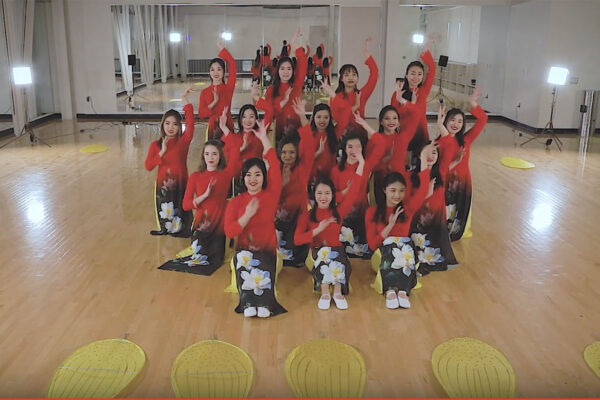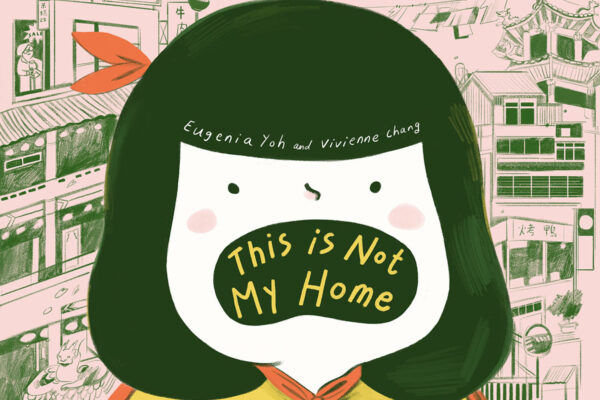The members of WashU Samulnori have a nickname for their group: the Sam Fam.
“Samulnori is a family, and I really do believe that,” said member Jaz Choi. “We are all very close to each other. That’s something I’m proud of, every year — that we can facilitate such a tight community.”
Choi and Sangwook Suh, both seniors, are co-choreographers for WashU Samulnori’s upcoming performance in “Chasing Dreams,” this year’s Lunar New Year showcase, which runs Friday and Saturday, Feb. 3-4, at Edison Theatre on the Danforth Campus of Washington University in St. Louis. A celebration of Asian culture, the student-produced event also features a Chinese fan dance, a Vietnamese lotus dance, Filipino tinikling and other acts.
A crowd favorite, Samulnori is a genre of traditional Korean percussion music that uses four types of instruments — kkwaenggwari (small gong), janggu (hourglass drum), buk (barrel drum), jing (large gong) — to create dynamic rhythms and rousing crescendos.
Here, Suh and Choi discuss the cultural significance of Samulnori and their vision for this year’s performance.
What is the cultural significance of Samulnori?
Suh: Samulnori was typically performed by and for the common people in ancient Korea. It was mostly played around harvest season to celebrate harvests and to wish for a new harvest next year, too. It was usually played by people who were considered among the lowest rungs of society or not high in social standing. It was something that anyone could join and be free to do without paying attention to too many rules.
What is the concept for this year’s piece?
Choi: We wanted to go a little bit more of a traditional route, which means that we have a lot of cadences that are very familiar to Samulnori performances. We also do have a few variations of sections. We played with different types of dynamics, especially in terms of weather. We have a very slow, quiet beginning that crescendos up and matches the idea of the weather increasing and becoming more dramatic.
Suh: The outfits we wear are called chibok, which basically means “performance clothing” in Korean. We have a white top and bottom which represent what farmers would wear in an everyday setting. The black clothes on top are added to make it fancy and stand out. The colors of the ribbons laid on top have specific meanings — the blue symbolizes the sky, red symbolizes the ground and yellow symbolizes humans, or the farmers who are between the sky and ground.
How did you get into Samulnori, and why did you decide to become choreographers this year?
Choi: I was in my high school’s drumline. At WashU, I wanted to pursue something a little bit closer to my culture. I heard about Samulnori, which was a nice mix of Korean culture and percussion. I was a choreographer for Samulnori in my sophomore year, so I wanted to take the opportunity again when I was a senior with more experience and with more time on my hands. I also really love Samulnori as a group, so I wanted to do more for it, especially in a leadership position.
Suh: I’ve been doing Samulnori since I was in elementary school. My second grade homeroom teacher was also the school music teacher and specialized in Korean traditional music education. She led the Janggu Club, and janggu is the name of the drum that I play now. Because she had the extracurricular club, I first learned to drum, and then I wanted to do more, so that’s how I ended up doing the Samulnori club. At WashU, I’ve been involved in many different clubs, but I really like this, and it’s my passion. So for my last year, I wanted to get more involved.
As choreographers, what do you look for at auditions? Do people typically have prior experience with Samulnori?
Choi: We typically look for people who have a strong sense of rhythm and can quickly learn how to make clear, crisp sounds on their instrument. People don’t necessarily need to have prior experience. We have noticed that a lot of people who have played Samulnori before end up auditioning for Samulnori, but we definitely have members — like myself — who had never even heard of Samulnori before college, so there’s a nice wide variety.




